A Guide to Flowers for Butterfly and Hummingbird Gardens: How to Attract Pollinators with Blooms
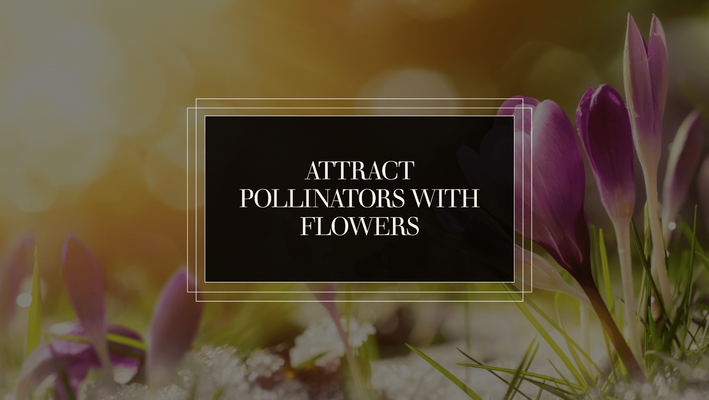
Picture this: You're sipping your morning coffee, watching as the sun slowly ascends in the sky, casting long, radiant hues across your garden. And in this garden, life is already stirring - butterflies are fluttering, hummingbirds are darting, and flowers are unfurling their vibrant petals to welcome the new day. It's a scene straight out of a fairy tale, a slice of paradise right in your backyard.
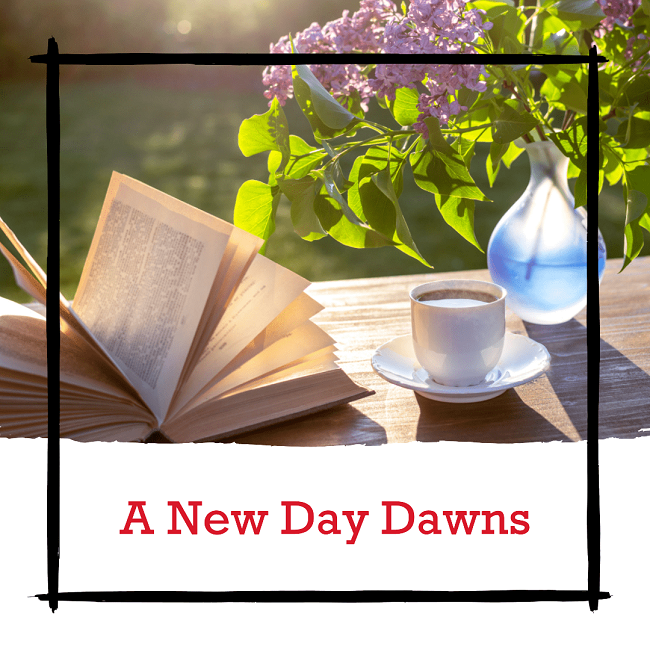
Welcome to the enchanting world of butterfly and hummingbird gardens, where nature's delicate creatures and the splendor of blooming flowers converge in a mesmerizing display of beauty, color, and movement. It's a symphony of life, a collaboration between pollinators and plants that captivates the senses and fills the air with magic.
But creating a garden that is a haven for butterflies and hummingbirds is about much more than aesthetics. It's about fostering a thriving ecosystem, where these remarkable creatures play a vital role in pollination, helping to sustain our environment and the diversity of plant life around us. It's a responsibility, a celebration, and a gift to the planet we call home.
In this comprehensive guide, we will embark on a journey through the captivating world of butterfly and hummingbird gardens. We will uncover the secrets to attracting these pollinators through the power of blooms, exploring their lifecycles, understanding their preferences, and discovering the essential elements needed to create a sanctuary they can call home.
Butterflies and hummingbirds are not just fleeting visitors; they are a part of our natural heritage, delicate ambassadors of nature's wonders. By embracing their presence and building a garden that welcomes them, we contribute to the conservation of these incredible species and create a space where we can marvel at their elegance, grace, and tenacity.
So, grab your gardening gloves, sharpen your senses, and let's dive into the world of flowers, fluttering wings, and the timeless dance between pollinators and blooms. Together, we will unlock the secrets of creating a butterfly and hummingbird garden that is both a sanctuary for these creatures and a source of endless joy and inspiration for ourselves.
Are you ready to embark on this exciting journey? Let's begin.
The Beauty of Butterfly and Hummingbird Gardens
In the realm of gardens, there is something truly enchanting about a space that attracts butterflies and hummingbirds. It's as if the garden becomes a stage, and these delightful creatures are the stars of a captivating performance. Their delicate wings fluttering, their vibrant colors adding brushstrokes to the canvas of nature, and their graceful movements evoking a sense of awe and wonder.
Imagine walking through a garden adorned with a tapestry of blooming flowers in a kaleidoscope of hues. The air is alive with the gentle hum of buzzing wings, and flashes of brilliance catch your eye as butterflies flit from petal to petal. Amidst this symphony of colors and movements, tiny hummingbirds zip through the air with astonishing speed, their iridescent feathers glistening in the sunlight.
Butterfly and hummingbird gardens are a celebration of life, an invitation to immerse ourselves in the beauty and tranquility of the natural world. These gardens possess an innate charm that touches our souls, awakening a sense of childlike wonder and reminding us of the magic that exists all around us.
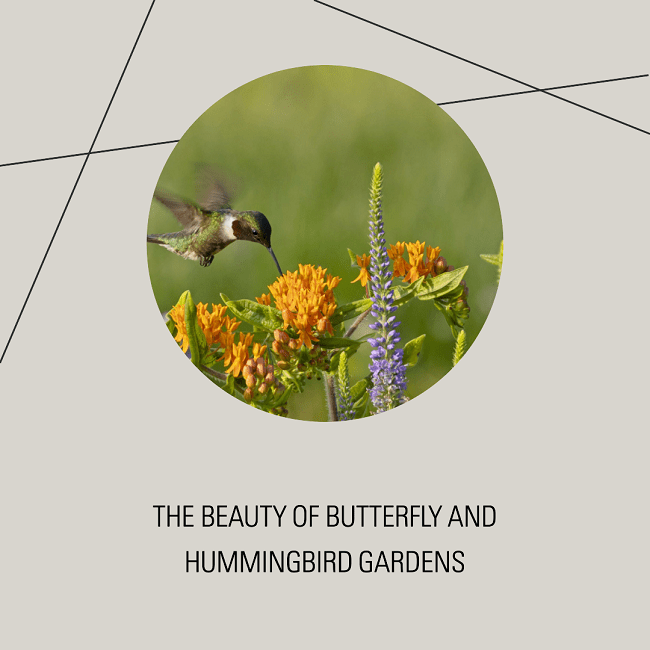
There is a certain joy that comes from witnessing a butterfly delicately alighting on a flower, its slender proboscis gracefully unfurling to sip nectar. Or observing a hummingbird hovering effortlessly in mid-air, its wings beating so rapidly that they create a gentle humming sound. These moments capture our attention, captivating our senses and reminding us of the intricate and awe-inspiring harmony of nature.
In a butterfly and hummingbird garden, every day holds the potential for discovery and delight. Each season reveals new wonders, as different species of butterflies and hummingbirds make their appearance, drawn to the abundance of nectar and shelter provided by the carefully selected flowers. It is a symphony of life, an ever-changing tableau that evolves with the passing of days and the turning of the seasons.
Beyond their aesthetic appeal, butterfly and hummingbird gardens serve a greater purpose. They are vital habitats that support the delicate balance of our ecosystem. As these charming pollinators visit flowers in search of nectar, they inadvertently transfer pollen from one blossom to another, enabling the reproduction and survival of countless plant species. They are nature's diligent gardeners, quietly toiling to ensure the continuation of life.
Moreover, these gardens offer us a precious opportunity to reconnect with nature and find solace in its embrace. As we immerse ourselves in the serenity of these spaces, surrounded by the fluttering wings and delicate beauty of butterflies and hummingbirds, we find respite from the hectic pace of modern life. It is a sanctuary for the soul, a place where we can pause, breathe, and reconnect with the simple joys of existence.
In the embrace of a butterfly and hummingbird garden, time seems to slow down. The worries and stresses of daily life melt away as we become engrossed in the dance of nature unfolding before our eyes. It is a reminder that beauty can be found in the simplest moments, in the delicate flutters of a butterfly's wing or the fleeting visit of a hummingbird.
So, whether you're an avid gardener seeking to create a haven for these enchanting creatures or simply someone who yearns for a slice of natural beauty in their lives, a butterfly and hummingbird garden offers an invitation to embark on a journey of wonder and discovery. It is an opportunity to witness the magic of nature up close, to immerse ourselves in its rhythms, and to find solace and inspiration in the timeless beauty of butterflies and hummingbirds.
Prepare to be captivated, for within the petals of blooming flowers lies a world waiting to be explored—one where butterflies dance and hummingbirds hum—a world that invites us to reconnect with the beauty and harmony of the natural world
The Essential Role of Pollinators in Our Ecosystem
Pollinators like butterflies and hummingbirds play a crucial role in maintaining the health of our ecosystem. According to the U.S. Forest Service, about 75% of all flowering plants rely on animal pollinators, and in the U.S., that's mostly done by bees, butterflies, and hummingbirds. Without these tireless workers, our food chain and natural ecosystems would be in serious jeopardy.
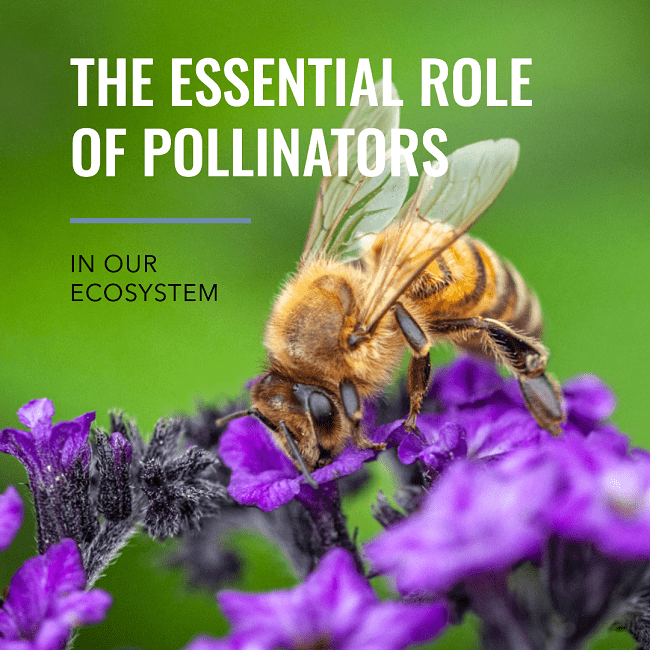
Part 1: Understanding Pollinators: Butterflies and Hummingbirds
In the realm of pollinators, butterflies and hummingbirds hold a special place. These charismatic creatures not only add a touch of beauty to our gardens but also play a vital role in the intricate web of life. Understanding their lifecycles, behaviors, and preferences is key to creating a garden that can truly attract and support these remarkable pollinators.
Let's start with butterflies. These delicate winged creatures undergo a remarkable transformation, transitioning from egg to caterpillar to chrysalis before emerging as a magnificent butterfly. Each stage of their lifecycle is a testament to the wonders of nature's design.
Butterflies have a keen sense of sight, and they are particularly drawn to vibrant colors and patterns. Flowers with bright hues such as red, orange, and purple act as beacons, attracting them from afar. The nectar within these flowers provides a crucial source of energy, fueling their flight and sustaining them throughout their adult life.
As they flit from flower to flower, butterflies unwittingly pick up pollen on their bodies. When they visit another flower of the same species, some of that pollen is transferred, enabling the process of pollination. This vital act facilitates the reproduction of plants, ensuring the production of fruits, seeds, and new generations of flora.
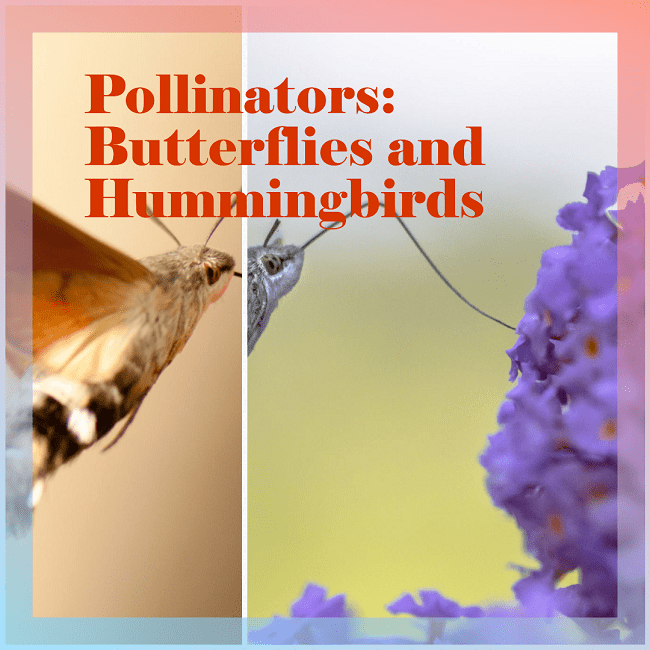
Now, let's turn our attention to the mesmerizing world of hummingbirds. These tiny avian creatures are known for their exceptional hovering abilities and their long, slender beaks perfectly adapted for accessing nectar deep within flowers. With wings that beat at an astonishing rate of up to 80 times per second, hummingbirds are a marvel of nature's engineering.
Hummingbirds have a voracious appetite for nectar, and they require a substantial amount of energy to sustain their rapid wingbeats. Flowers with tubular shapes, such as trumpet vines and salvias, are a particular favorite. These specialized flowers provide the perfect fit for a hummingbird's beak, allowing them to access the sweet nectar within.
As hummingbirds feed, they inadvertently transfer pollen from flower to flower, ensuring cross-pollination and the continuation of plant species. Their long beaks and slender tongues are uniquely adapted to reach the nectar at the base of flowers, making them efficient and effective pollinators.
To attract butterflies and hummingbirds to your garden, it's essential to provide the right environment and resources. Planting a diverse array of flowers that cater to their specific needs is crucial. Incorporating native plants is particularly beneficial, as they have co-evolved with local pollinators and are well-suited to their preferences.
Consider creating clusters or patches of flowers to provide ample foraging opportunities for these pollinators. Grouping flowers of the same species together can make them more conspicuous and attract butterflies and hummingbirds more effectively. Additionally, incorporating flowers with different blooming times ensures a continuous supply of nectar throughout the seasons, encouraging the return of these fascinating visitors year after year.
As we deepen our understanding of butterflies and hummingbirds, we gain a greater appreciation for their role as pollinators and their delicate interconnectedness with the plant world. By creating a garden that caters to their needs, we can contribute to the conservation of these species while reveling in the joy and wonder they bring to our lives.
So, as you embark on your journey to create a butterfly and hummingbird garden, remember to embrace the unique characteristics and requirements of these pollinators. Design your garden with their preferences in mind, and you'll be rewarded with a vibrant tapestry of color, movement, and the sweet melody of nature's most exquisite visitors.
Part 2: Essential Elements of a Pollinator Garden
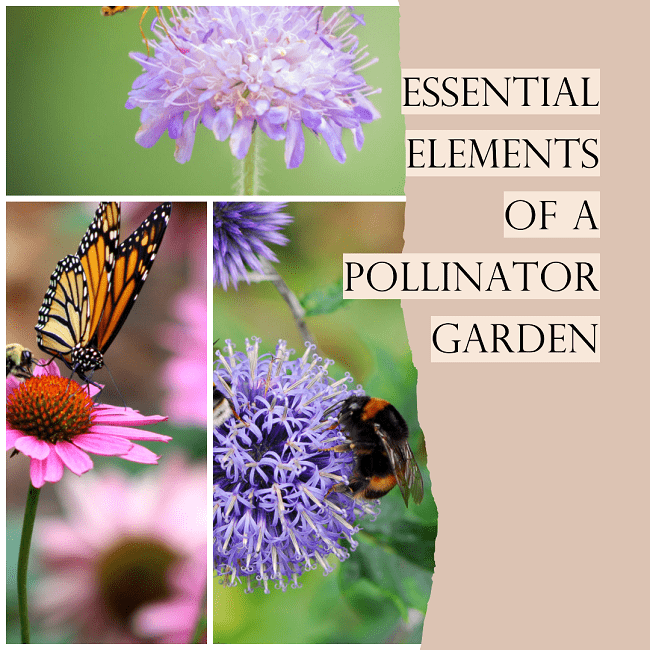
Sunlight
Both butterflies and hummingbirds are attracted to sunny spaces. Ensure your garden receives ample sunlight throughout the day to provide the warmth and energy these pollinators need.
Shelter
Create sheltered areas within your garden to protect butterflies and hummingbirds from strong winds. Plant shrubs or small trees as windbreaks to create a more favorable environment for their flight and feeding.
Water
Provide a water source such as a shallow birdbath or small pond with rocks or pebbles for perching. This allows butterflies and hummingbirds to drink and bathe, enhancing the attractiveness of your garden.
Flower Diversity
Incorporate a diverse array of flowers to attract a wide variety of pollinators. Different species of butterflies and hummingbirds have varying preferences for nectar sources. Include flowers of various shapes, colors, and sizes to cater to their unique needs and create a visually appealing garden.
Seasonal Blooms
Plan for a garden that blooms throughout the seasons, ensuring a continuous food supply for pollinators. Plant a combination of annuals and perennials that flower at different times, providing nectar from early spring to late fall and attracting butterflies and hummingbirds year-round.
Native Plants
Incorporate a variety of native plants in your garden. Native flowers are well-adapted to the local environment and are attractive to native pollinators. They provide the necessary nectar and habitat, supporting local butterfly and hummingbird populations.
Sustainable Practices
Embrace sustainable gardening practices to create an eco-friendly environment. Avoid using pesticides and insecticides that can harm beneficial insects. Opt for natural pest control methods or companion planting techniques that deter pests without endangering pollinators.
Grouping Flowers
Arrange flowers in clusters or patches to create visible and attractive feeding areas. Grouping flowers of the same species together can make them more noticeable to pollinators and increase the chances of attracting butterflies and hummingbirds.
Remember, a pollinator garden is a place where beauty and functionality intertwine. It is a space that not only nourishes and supports these incredible creatures but also brings joy and inspiration to those who witness the enchanting dance of butterflies and the graceful presence of hummingbirds.
So, as you plan your garden, consider these essential elements and unleash the full potential of your pollinator-friendly oasis. Embrace the natural rhythms of the environment and create a harmonious sanctuary where butterflies and hummingbirds can thrive, pollinate, and bring the magic of nature to your doorstep.
Part 3: Choosing the Right Flowers for Pollinators
Selecting the right flowers is arguably the most important step in creating a pollinator-friendly garden. As mentioned earlier, different pollinators have different preferences. In terms of butterflies, plants like Milkweed, Butterfly Bush, and Zinnias are excellent choices, while hummingbirds can't resist the lure of flowers like Trumpet Vine, Bee Balm, and Salvia.
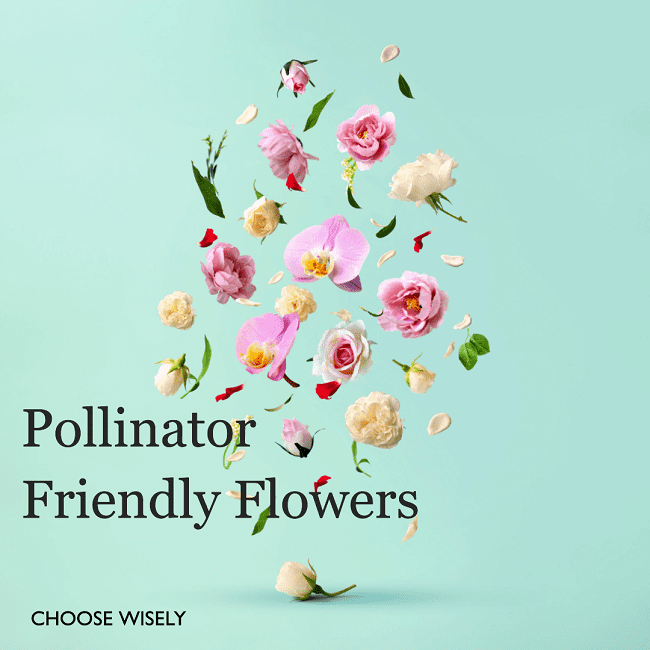
Remember our previous blogs on the intriguing origins of flower names and how to choose blooms for a charming, small-scale landscape? They offer some fantastic insights that can guide your flower selection process.
Part 4: How to Plant a Butterfly and Hummingbird Garden
When it comes to creating a butterfly and hummingbird garden, careful planning is key. Consider the available space and envision how you want your garden to look. Plan the layout, determining the placement of flower beds, shrubs, and any additional features like a birdbath or hummingbird feeder. Create open spaces for butterflies to flutter and areas with taller plants for hummingbirds to perch.
Selecting the Right Flowers
Choosing the right flowers is essential for attracting butterflies and hummingbirds. Refer to our previous sections for flower selection guides specific to each pollinator. Include a variety of flowers that provide nectar and cater to different species' preferences. Aim for a diverse range of flower shapes, sizes, and colors to create an enticing garden. Don't forget to incorporate native plants, as they are well-suited to local pollinators.
Preparing the Soil
Before planting, it's important to prepare the soil properly. Loosen the soil and remove any weeds or debris. Enhance soil fertility and drainage by adding organic matter such as compost or well-rotted manure. This sets the foundation for healthy growth and helps your flowers thrive.
Planting Techniques
Follow planting techniques specific to each flower species. Dig a hole slightly larger than the root ball and gently place the plant in the hole. Backfill the hole with soil and firmly press it around the plant to eliminate air pockets. Give the newly planted flowers a thorough watering to help them establish their roots.
Maintenance and Care
Regular maintenance is vital for a successful butterfly and hummingbird garden. Water your plants regularly, especially during dry spells. Apply mulch around the base of the plants to retain moisture and suppress weed growth. Remove any weeds that may compete with your flowers for resources. Deadhead spent blooms to encourage continuous blooming and prevent self-seeding.
Year-Round Blooms
Create a garden that offers blooms throughout the seasons to attract butterflies and hummingbirds year-round. Incorporate a mix of early, mid, and late-season flowers to provide a continuous food source. Plan your flower selection carefully to ensure a steady supply of nectar from spring to fall.
Creating Habitat
Enhance your garden's appeal to butterflies and hummingbirds by providing additional habitat features. Place rocks or flat stones in sunny spots for butterflies to bask and warm their wings. Plant shrubs or create small brush piles to offer shelter. Consider installing butterfly houses or hummingbird feeders as extra resources for these pollinators.
Part 5: Providing Additional Resources for Pollinators
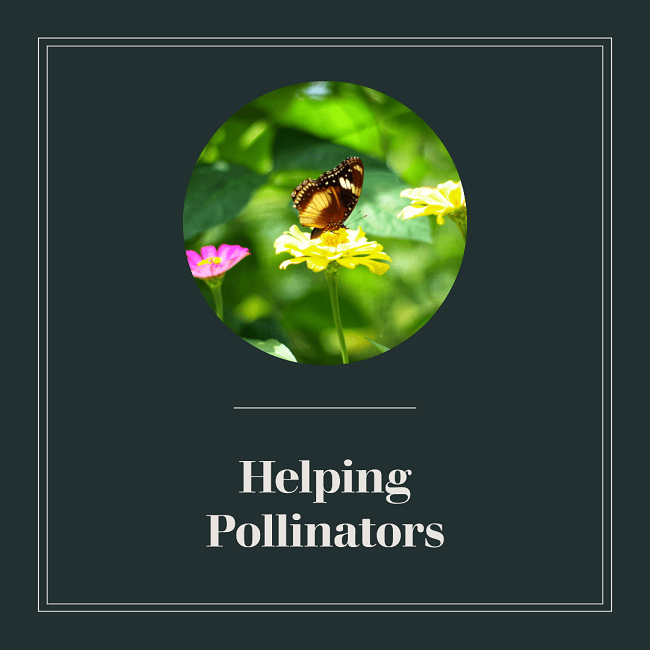
Water and shelter are essential resources for butterflies and hummingbirds in a pollinator garden.
Water Sources for Pollinators
Ensure a water source is available for pollinators to drink and bathe. Consider setting up a shallow birdbath or a small pond with rocks or pebbles for perching. This provides a refreshing oasis for butterflies and a place for hummingbirds to quench their thirst.
Shelter and Resting Areas
Create sheltered areas within your garden to protect pollinators from strong winds and predators. Plant shrubs or small trees to offer safe resting spots and refuge. These sheltered areas provide a sense of security for butterflies and hummingbirds as they take breaks between feeding.
Avoiding the Use of Pesticides and Insecticides
To protect pollinators, it's crucial to avoid the use of pesticides and insecticides in your garden. These chemicals can be harmful to butterflies, hummingbirds, and other beneficial insects. Instead, opt for natural pest control methods or use companion planting techniques to deter pests without endangering pollinators.
Plant Diversity and the Role of Host Plants for Caterpillars
Incorporate plant diversity in your garden to support a range of pollinators. Different butterfly species have specific host plants on which they lay their eggs, and caterpillars feed exclusively on these plants. By including host plants, you provide food and habitat for caterpillars, supporting the complete lifecycle of butterflies.
Creating a Pollinator-Friendly Environment
By providing additional resources such as water, shelter, and diverse plantings, you create a pollinator-friendly environment in your garden. These elements go beyond nectar sources and ensure the well-being and survival of butterflies and hummingbirds, contributing to the overall health of your pollinator garden.
Part 6: Monitoring and Enjoying Your Butterfly and Hummingbird Garden
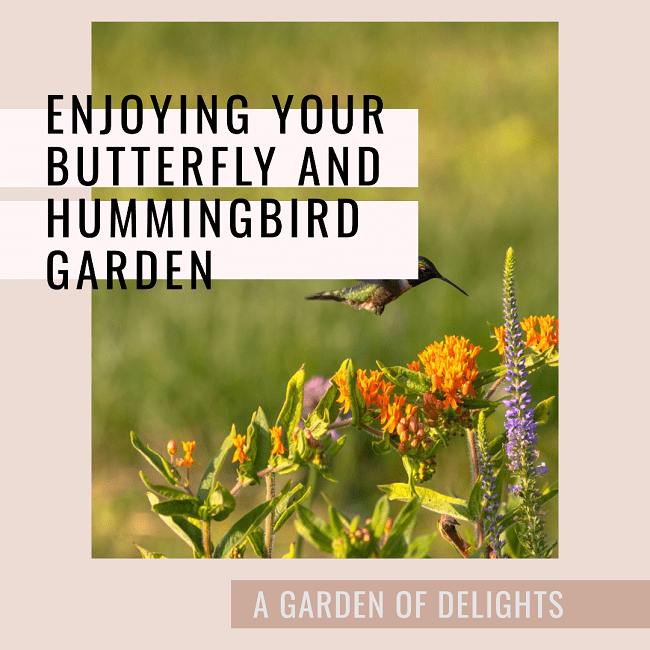
Take the time to identify the different species of butterflies and hummingbirds that visit your garden. Observe their unique colors, patterns, and behaviors. Use field guides or online resources to help you identify the specific species. Understanding the visitors in your garden adds to the enjoyment and appreciation of the pollinator ecosystem you have created.
How to Photograph and Document Your Pollinator Garden
Capture the beauty of your butterfly and hummingbird garden through photography. Use a camera or even a smartphone to document the colorful visitors and their interactions with the flowers. Experiment with different angles, lighting, and close-up shots to capture their delicate features. Documenting your garden provides lasting memories and allows you to share the wonders of nature with others.
Engaging Community and Inspiring Others to Create Pollinator Gardens
Share your passion for pollinator gardens with others and inspire them to create their own. Organize garden tours or host workshops to educate and engage your community. Share your knowledge and experiences through social media, blog posts, or local publications. By spreading awareness and inspiring others, you contribute to the greater cause of pollinator conservation.
Reflections on the Joy and Responsibility of Maintaining a Pollinator Garden
Take a moment to reflect on the joy and responsibility of maintaining a pollinator garden. Appreciate the beauty and wonder that these creatures bring to your space. Recognize the importance of your role in providing a habitat for butterflies and hummingbirds. Embrace the responsibility of preserving and nurturing the delicate balance of nature in your garden.
By monitoring and enjoying your butterfly and hummingbird garden, you deepen your connection to these incredible pollinators. Through identification, photography, community engagement, and reflection, you enhance the overall experience and impact of your garden. Let the magic of butterflies and hummingbirds inspire you to continue creating and caring for these special habitats.
Don't forget to document your garden journey, too! As we've talked about in our previous blog on how blooms can support learning and development, observing and documenting nature can be a great educational tool for children and adults alike.
Part 7: The Bigger Picture: Conservation and Sustainability
Pollinator gardens play a crucial role in preserving biodiversity and contributing to conservation efforts. By creating habitats that attract butterflies and hummingbirds, you contribute to the overall health and diversity of the ecosystem. These pollinators are essential for the reproduction of plants, ensuring the survival of various species and maintaining a balanced ecosystem.
Encouraging Sustainable Gardening Practices
Promote sustainable gardening practices to minimize the negative impact on pollinators and the environment. Opt for organic fertilizers and natural pest control methods instead of chemical-based alternatives. Practice water conservation techniques, such as using rainwater or efficient irrigation systems. By adopting sustainable practices, you create a healthier and more environmentally friendly space for butterflies, hummingbirds, and other wildlife.
Conservation Partnerships and Collaborations
Engage in conservation partnerships and collaborations to amplify the impact of your pollinator garden. Join local gardening or environmental organizations to exchange knowledge and resources. Participate in citizen science programs that collect data on butterfly and hummingbird populations. By working together with like-minded individuals and organizations, you contribute to larger-scale conservation efforts.
Educating Others about Pollinators and Gardening Responsibly
Become an advocate for pollinators by educating others about their importance and the ways in which they can create pollinator-friendly spaces. Offer workshops, presentations, or educational materials to schools, community groups, or gardening clubs. Teach others about the significance of planting native species, avoiding pesticide use, and creating habitat for butterflies and hummingbirds. By spreading awareness, you empower others to make a positive impact on pollinator conservation.
Conserving Natural Habitats beyond Your Garden
Recognize that the conservation of natural habitats extends beyond your garden. Support the preservation and restoration of native habitats in your community, such as meadows, woodlands, or wetlands. These areas serve as crucial habitats for pollinators and other wildlife. Get involved in local conservation initiatives, volunteer for habitat restoration projects, or support organizations working towards habitat conservation.
Summing Up...
Reflecting on the journey of creating and maintaining a butterfly and hummingbird garden, we are reminded of the joy and responsibility that comes with cultivating a space that welcomes these remarkable pollinators. Throughout this guide, we have explored the beauty and significance of butterfly and hummingbird gardens, delving into their lifecycles, the role of flowers in attracting them, and the essential elements necessary for their thriving.
By embracing the enchanting dance of butterflies and the graceful presence of hummingbirds, we not only create a haven of natural beauty but also contribute to the preservation of biodiversity and the delicate balance of our ecosystem. These gardens offer more than visual appeal; they serve as vital habitats that support the reproduction and survival of countless plant species.
As we carefully plan our garden layout, select the right flowers, and provide additional resources like water and shelter, we create a pollinator-friendly environment that nurtures and sustains these important creatures. The journey of planting and maintaining a butterfly and hummingbird garden requires our commitment to sustainable practices, ensuring the well-being of pollinators and the health of the environment.
Monitoring and enjoying our gardens allow us to deepen our connection with nature. Through identifying common species, capturing their beauty through photography, and engaging our community, we expand the impact of our gardens beyond our own spaces. We inspire others to create their own pollinator habitats, spreading the joy and awareness of the vital role these creatures play in our world.
Moreover, our gardens are part of a broader conservation effort. By recognizing the significance of our role as stewards of the environment, promoting sustainable gardening practices, and actively engaging in conservation partnerships, we contribute to the preservation of pollinators on a larger scale. Educating others about the importance of pollinators and advocating for responsible gardening practices empowers individuals to make a positive impact and join the movement towards a more sustainable future.
As we conclude this guide, we invite you to embrace the wonder and responsibility of maintaining a pollinator garden. Whether you have just embarked on this journey or are a seasoned gardener, remember the immense joy that comes from witnessing the delicate flutters of a butterfly's wing or the graceful presence of a hummingbird. Cherish the vibrant tapestry of colors, the gentle hum of buzzing wings, and the knowledge that you are making a difference in the conservation of these remarkable creatures.
In the ever-changing seasons of your garden, find solace and inspiration. Embrace the lessons that nature teaches us about patience, resilience, and interconnectedness. May your butterfly and hummingbird garden not only be a sanctuary for these pollinators but also a sanctuary for your own soul—a place to pause, reflect, and reconnect with the simple joys and profound beauty that the natural world offers.
So, let us continue to plant, nurture, and celebrate these enchanting gardens, creating a world where butterflies dance and hummingbirds hum—a world that inspires wonder, conservation, and a deep appreciation for the intricate harmony of nature.
FAQ
-
What is a butterfly and hummingbird garden?
A butterfly and hummingbird garden is a specially designed space that aims to attract and support butterflies and hummingbirds by providing a variety of flowers that offer nectar, shelter, and other necessary resources.
-
Why are butterflies and hummingbirds important?
Butterflies and hummingbirds play a vital role in pollination, helping plants reproduce and ensuring biodiversity. They transfer pollen from flower to flower, enabling the production of fruits, seeds, and new generations of plants.
-
What flowers should I plant in a butterfly and hummingbird garden?
For butterflies, choose flowers with vibrant colours such as milkweed, coneflowers, and zinnias. Hummingbirds are attracted to tubular-shaped blooms like trumpet vines, salvias, and bee balm.
-
Should I include native plants in my garden?
Incorporating native plants is highly beneficial as they have co-evolved with local pollinators and provide familiar nectar sources. They are well-suited to the preferences of butterflies and hummingbirds in your region.
-
How do I create a pollinator-friendly environment in my garden?
To create a pollinator-friendly environment, ensure your garden receives ample sunlight and provide water sources like birdbaths. Create sheltered areas for resting, avoid using harmful chemicals, and plant a diverse range of flowers that bloom throughout the seasons.
-
How do I attract butterflies and hummingbirds to my garden?
Attracting butterflies and hummingbirds involves planting the right flowers, arranging them in groups, and providing a variety of nectar sources. Creating a favourable habitat with proper layout, water, and shelter will make your garden more appealing to these pollinators.
-
What can I do to support butterfly and hummingbird conservation?
Support butterfly and hummingbird conservation by practising sustainable gardening, avoiding the use of harmful chemicals, and planting native species. Engage in community initiatives, educate others about pollinators, and participate in citizen science programs.
